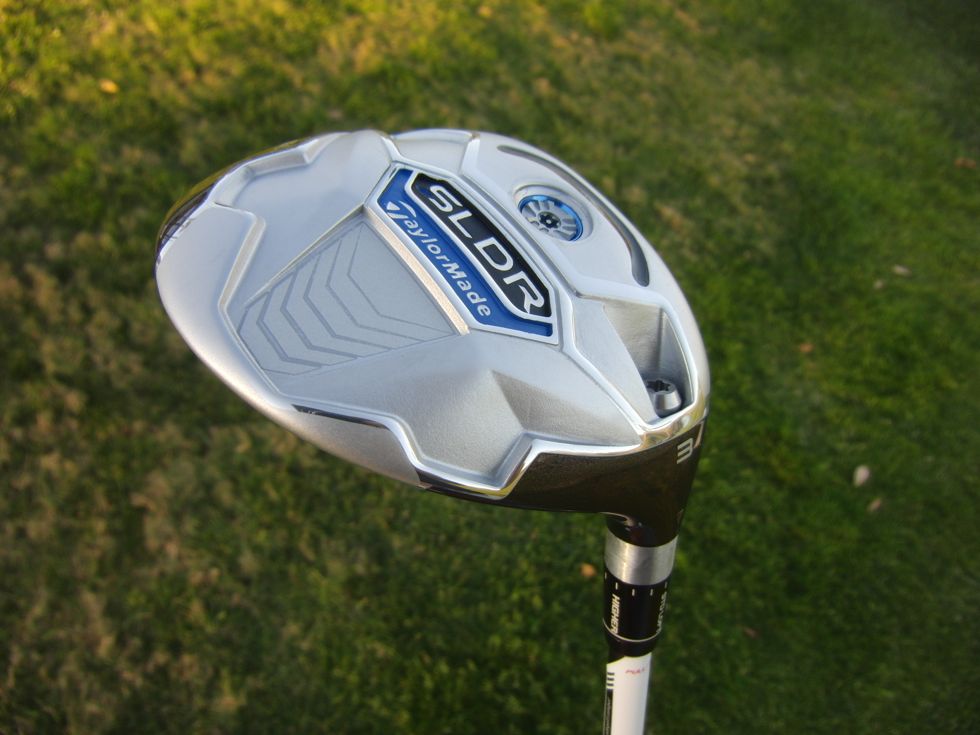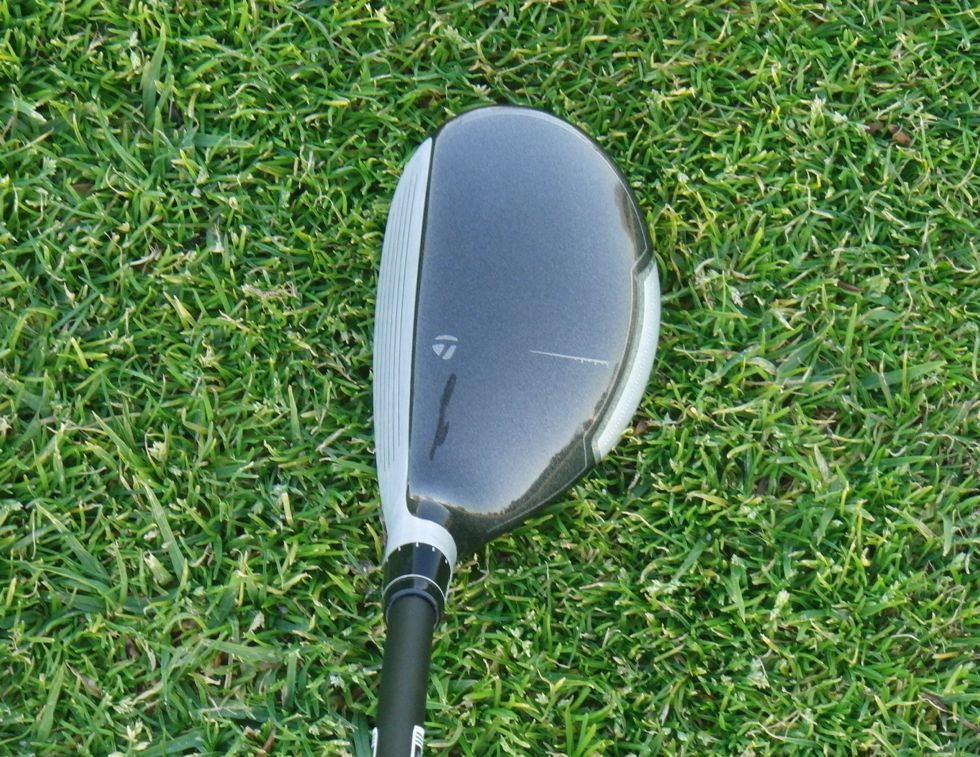Do the SLDR Fairway and Rescue live up to the hype of the SLDR Driver? And what’ s with this low-forward center of gravity concept anyway?
Share this with your golf buddies:
 One of the most hyped family of clubs currently out there is the SLDR from TaylorMade. First came the driver with its signature movable weight that (yes) slides toward the toe or heel to adjust ball flight. This was not a new idea, as Mizuno and others had used a slide-able weight in the past. No, the real breakthrough technology in the SLDR family is the low-and-forward center of gravity (CG). And unlike the slider weight, the low-and-forward CG is found throughout the line, including in the fairway and rescue woods.
One of the most hyped family of clubs currently out there is the SLDR from TaylorMade. First came the driver with its signature movable weight that (yes) slides toward the toe or heel to adjust ball flight. This was not a new idea, as Mizuno and others had used a slide-able weight in the past. No, the real breakthrough technology in the SLDR family is the low-and-forward center of gravity (CG). And unlike the slider weight, the low-and-forward CG is found throughout the line, including in the fairway and rescue woods.
TaylorMade claims that the low-and-forward CG will let many players increase loft to achieve a higher launch with lower spin to promote maximum distance. This is a tantalizing prospect. In most parts of the U.S., golf remains an aerial game. Bandon Dunes and other truly firm and fast courses aside, players are almost always better off getting maximum carry rather than trying to run the ball along the fairway. Higher shots will land softer, giving us a better chance to hold the green and less chance of it running into trouble.

There is no denying that SLDRs are generating a lot of buzz. You can spot the chrome accent all over every PGA Tour broadcast, and probably at your club, as well. The rumor is that several manufacturers will be moving weight forward and low in upcoming models. Will this be the next big thing? Let’s take a look.
Continue reading “TaylorMade SLDR Fairway and Rescue Review”
Share this with your golf buddies:
 The Tour Preferred CB irons are, I suppose, the spiritual successors to the RocketBladez Tour irons that I reviewed a year ago. They’re another cast set of irons with TaylorMade’s Speed Pocket technology (a polymer-filled slot cut out of the sole) that TM is hoping will appeal to a mass audience as well as the occasional better player. Ideally, these are a spectrum-spanning set of irons.
The Tour Preferred CB irons are, I suppose, the spiritual successors to the RocketBladez Tour irons that I reviewed a year ago. They’re another cast set of irons with TaylorMade’s Speed Pocket technology (a polymer-filled slot cut out of the sole) that TM is hoping will appeal to a mass audience as well as the occasional better player. Ideally, these are a spectrum-spanning set of irons. The azaleas must be blooming. Are you ready for plenty of Condoleezza sightings and to hear “A tradition unlike any other” about a ka-zillion times this week? It will all be worth it come Sunday and the most famous back nine in all of golf.
The azaleas must be blooming. Are you ready for plenty of Condoleezza sightings and to hear “A tradition unlike any other” about a ka-zillion times this week? It will all be worth it come Sunday and the most famous back nine in all of golf. One of the most hyped family of clubs currently out there is the SLDR from TaylorMade. First came the driver with its signature movable weight that (yes) slides toward the toe or heel to adjust ball flight. This was not a new idea, as Mizuno and others had used a slide-able weight in the past. No, the real breakthrough technology in the SLDR family is the low-and-forward center of gravity (CG). And unlike the slider weight, the low-and-forward CG is found throughout the line, including in the fairway and rescue woods.
One of the most hyped family of clubs currently out there is the SLDR from TaylorMade. First came the driver with its signature movable weight that (yes) slides toward the toe or heel to adjust ball flight. This was not a new idea, as Mizuno and others had used a slide-able weight in the past. No, the real breakthrough technology in the SLDR family is the low-and-forward center of gravity (CG). And unlike the slider weight, the low-and-forward CG is found throughout the line, including in the fairway and rescue woods.
 In the past couple of years TaylorMade launched one of the most aggressive marketing campaigns the golf industry has ever seen around a unique club named Rocketballz. The Rocketballz line was a very popular line of drivers and fairway woods. Hoping to continue on the excitement TaylorMade released Rocketballz-ier line called RBZ Stage 2. The Stage 2 line was not nearly as popular as the original, and so once again TaylorMade decided to change it up with the JetSpeed line of woods.
In the past couple of years TaylorMade launched one of the most aggressive marketing campaigns the golf industry has ever seen around a unique club named Rocketballz. The Rocketballz line was a very popular line of drivers and fairway woods. Hoping to continue on the excitement TaylorMade released Rocketballz-ier line called RBZ Stage 2. The Stage 2 line was not nearly as popular as the original, and so once again TaylorMade decided to change it up with the JetSpeed line of woods.